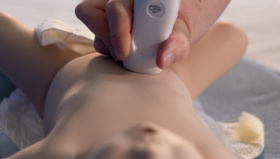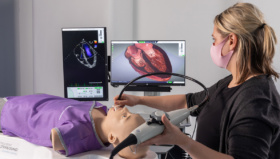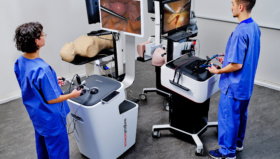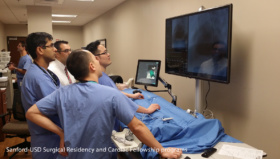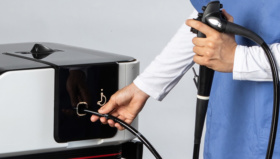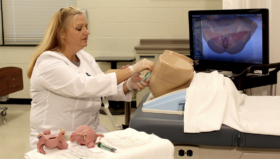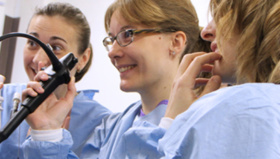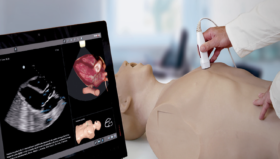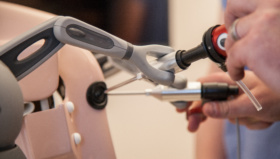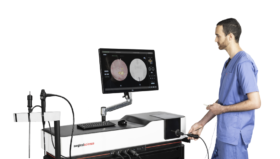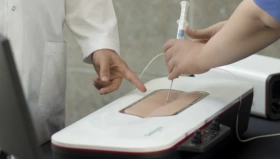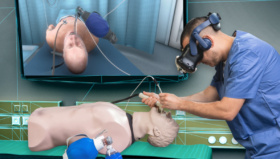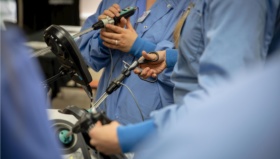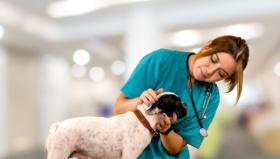European Society for Gynecological Endoscopy (ESGE) and Surgical Science are working together to develop new standards for robotic surgery training.
BACKGROUND
The Gynecological Endoscopic Surgical Education and Assessment (GESEA) program is a structured educational program for Gynecological Endoscopy. It trains and certifies knowledge and practical skills prior to surgical competence and is the official Diploma program of the European Society for Gynecological Endoscopy (ESGE).
In October 2024 ESGE introduced a groundbreaking robotic surgery certification with simulation benchmarks to ensure trainees are reaching safe levels of proficiency before working in a live surgical environment.
Here, Professor Benoit Rabischong, head of educational and scientific activity at ESGE, and Anders Melander, Senior Director for Medical Affairs at Surgical Science, discuss the benefits of the new certification and explain how this collaboration is a blueprint for success in incorporating simulation into surgical training.
THE INCREASING IMPORTANCE OF ROBOTICS
The GESEA Diploma was launched eight years ago and has three main pillars: The knowledge pillar is a specific eLearning course; this is followed by a certification in psychomotor skills; and, finally, a surgical competence assessment carried out under expert review. All three stages must be successfully completed for trainees to receive their Diplomas.
Thousands of surgeons have passed through the GESEA program since its inception, and it has become a gold standard for surgical education. But the increasing importance of robotic surgery led ESGE to review the curriculum and embed a new robotics certification which should be achieved before Diplomas are awarded.
Working alongside partners including Surgical Science, the study measured participants’ performances as they attempted five core tasks multiple times under strict timing, safety and quality conditions. The exercises chosen for the robotics certification were:
- Clutch
- Camera navigation 0
- Wrist articulation 1
- Energy pedals 2
- 4th arm cutting
The study involved a cohort of 25 experienced surgeons, and a cohort of 25 novices, with each participant making multiple attempts at each task. In total, almost 4000 sessions were logged using Surgical Science simulation software, creating a vast amount of data. Crucially, the ‘novice’ cohort needed to have very little, or even ‘zero knowledge’ of these skills beforehand so that Surgical Science could accurately map the learning curve.’
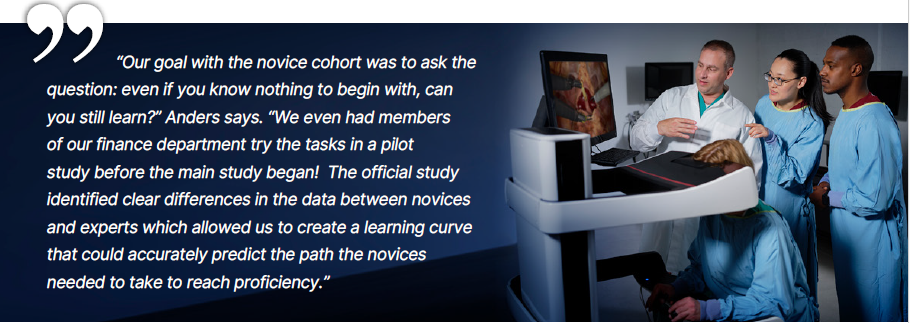
Our goal with the novice cohort was to ask the question: even if you know nothing to begin with, can you still learn?” Anders says. “We even had members of our finance department try the tasks in a pilot study before the main study began! The official study identified clear differences in the data between novices and experts which allowed us to create a learning curve that could accurately predict the path the novices needed to take to reach proficiency.
The new certification was launched during the ESGE annual Congress in Marseille in October 2024.
We had 25 students attempt the certification during the conference, and we found that it’s not super easy!” Prof Rabischong remembers. “The success rate was just over 50%, so it was clear that, to pass, you need to have prior training in robotics on simulators to be ready. To me, that shows that the benchmarks are correct.
NOT JUST TRIAL AND ERROR
The new certification offers important points of differentiation from existing surgical skills such as laparoscopy, where techniques such as suturing are typically tested using simulation exercises on pelvic box trainers or live animal models.
Robotics lends itself very well to simulation as the technology is a lot closer to the live surgical environment,” Prof Rabischong explains. “The instruments, the console, and the overall experience are very similar to how it feels in the theater. That’s what’s important about this training program, it’s a scientific assessment of both motor skills and surgical competency using scientific data – that’s what’s interesting to us.
This is not just trial and error, it is about scientific research going into the program,” Anders agrees. “That’s what ESGE needs to include robotic surgery simulation in its Diploma. I think there is an understanding from the experts on how much training it takes for surgeons to gain proficiency, but we also need to have accurate benchmarks that are scientifically proven to show a trainee is ready for the live environment – because, ultimately, patient lives are at stake.

A MUTUALLY BENEFICIAL RELATIONSHIP
There is a clear pathway for other education facilities to create similar simulation programs in the future. Surgical Science’s ‘platform-agnostic’ software means new training protocols can be built into existing simulators from other companies, allowing for trainers to continue working with any commercial simulators they might already be using.
We hope this kind of collaboration with a prestigious European organization like ESGE can pave the way for wider acceptance of simulation as the gold standard for medical training across all disciplines in every country,” Anders says.
For ESGE, the new robotics certification exemplifies the importance of the relationship between the surgical community and companies like Surgical Science who are developing new simulation technology all the time.
The collaboration is good,” Prof Rabsichong says. “For the best education solutions, we need the best and most realistic simulators. And for MedTech companies, they cannot do the studies or the development work they need without the support of the surgeons and the educators’ expertise. It’s a win-win relationship.
